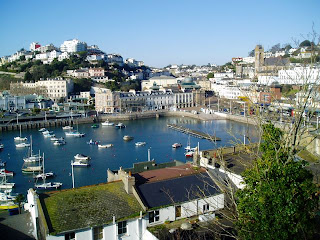Eight go Wild in Plymouth.
 |
| Ready for the off. |
Monday 30th January....
Rain. Rain. RAIN!! blurgh :(
The day starts with a warm shower, challenged by the cold outside. A quick brief told us where we would be heading today. Destination: Plymouth
The forty five minute drive with a driver who is.. well... hmmm.. not bad :S
First stop: The Hoe
A red and white lighthouse stands on the green where Sir Francis Drake continued to play bowls despite imminent approach of the Spanish Armada.
Here, surrounded by the history, we studied the events which made Plymouth such an important city.
Second Stop: Frankfort Gate and the Covered Market. Here, we assessed the attempts to rebrand this part of the city centre by creating an independent quarter. We assessed this by using Environmental Quality Index, Index of Decay, Pedestrian Count and Perception Study.
Third stop: Drake Circus; using the same techniques, we assessed the success of this most modern addition to Plymouth's retail landscape. This under cover shopping precinct contrasts starkly with the closed shops fourth down the hill in the city centre.
 |
| Drake Circus shopping centre |
 |
| Empty retail space in the city centre. |
Fourth Stop: The Historical Barbican District, site of the Mayflower steps whence the Pilgrim Fathers are said to have departed for a new life in the New World.
An interesting area full of potential which was dampened by the dismal weather.
 |
| Running from the Urban Splash cows |
 |
| Ahoy there! |
Last stop: Royal William Yard, an exciting new developed by Urban Splash, which is bringing modern loft-living to a historical complex of buildings which was once the Royal Naval Victualling Yard.
The End.
Charlotte and Jordan, Caterham Geographers

















